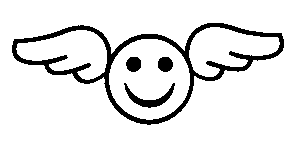Q+A with Digi: WTF is de-influencing?
Digi x i-D on de-influencing as the influencer archetype for the feed fatigue era
2023-02-16
We spoke to i-D on de-influencing as the latest iteration of influencer fatigue and how the trend will affect brands and the product virality cycle alike:
i-D: Do you see ‘de-influencing’ as a reaction against influencer culture, or the logical outcome of ‘influencer fatigue’/general mistrust in influencers? What is driving influencer fatigue/general mistrust in influencers? How are brands addressing this?
Digi: We’ve seen influencer fatigue change over the years – it was first characterised by mocking the perceived vapidity of influencers and it’s now evolved to be more aligned with an awareness of the role influencers play in forming identity around how we look and what we own. People are becoming more aware of influencers’ inherent link to consumerism. If they’re not selling you anything directly, perhaps they’re inadvertently selling you a beauty standard. For example, we’ve seen a new influencer look characterised by extremely sculpted cheekbones rise to popularity followed by a conversation about how for most of these influencers, the look was achieved through buccal fat removal procedure. As such, buccal fat removal is now on the menu of things you can spend money on to achieve a look that currently has cultural capital (despite all the controversy around the procedure).
i-D: The trend is more focused on products than individual influencers themselves. Do you think there’s a backlash against the ‘TikTok made me buy it phenomenon’? Are people tired of the lack of individuality the app fosters?
Digi: The focus is definitely more on the products than the individual influencers themselves. It seems to be a new iteration of the backlash against microtrends that we saw in 2021 – only this time the focus really seems to be on viral beauty, hair and wellness products versus specifically viral fashion items (as was the case in the rejection of microtrends).
i-D: What implications do you think ‘de-influencing’ has for brands looking to work with influencers? What implication do you think it has for influencers themselves? Do you think ‘de-influencing’ has genuine potential to make people rethink their buying habits? Will it actually undermine influencers? Or is it feeding the same cycle (surely de-influencing is still a form of influencing)?
Digi: It seems brands who sell up-market or expensive products will be most affected by de-influencing. For example, there’s already been so much conversation around expensive viral hair products like the Dyson Air Wrap and Olaplex being “not worth the money” and the “de-influencers” now discouraging us to purchase these products is just a culmination of that. I don’t see the de-influencing trend being as relevant for brands with more affordable products that have gone viral, like CerAve.
Ultimately, I think influencers will continue to influence and people will continue to purchase viral products, but hopefully with more discretion. De-influencing in itself is still another form of influencing, as it indicates the person de-influencing has the discretion or “taste” to move beyond purchasing into expensive trends because of the hype–but it can still help shift mindsets.
Read the full article by Daisy Schofield here.
✨ Contributing Fairies
- Biz Sherbert, Culture Editor
For more content like this, explore the rest of the Digiverse, or connect with us on TikTok or Instagram. If you’re a brand or business and want to inspire your audience in innovative ways, reach out to our strategic & creative lab eve@thedigitalfairy.co.uk

Welcome to the Digiverse, your portal to internet enlightenment.
From IRL to URL, digest the best of algorithm-driven culture – news, trends and insights – powered by The Digital Fairy.










